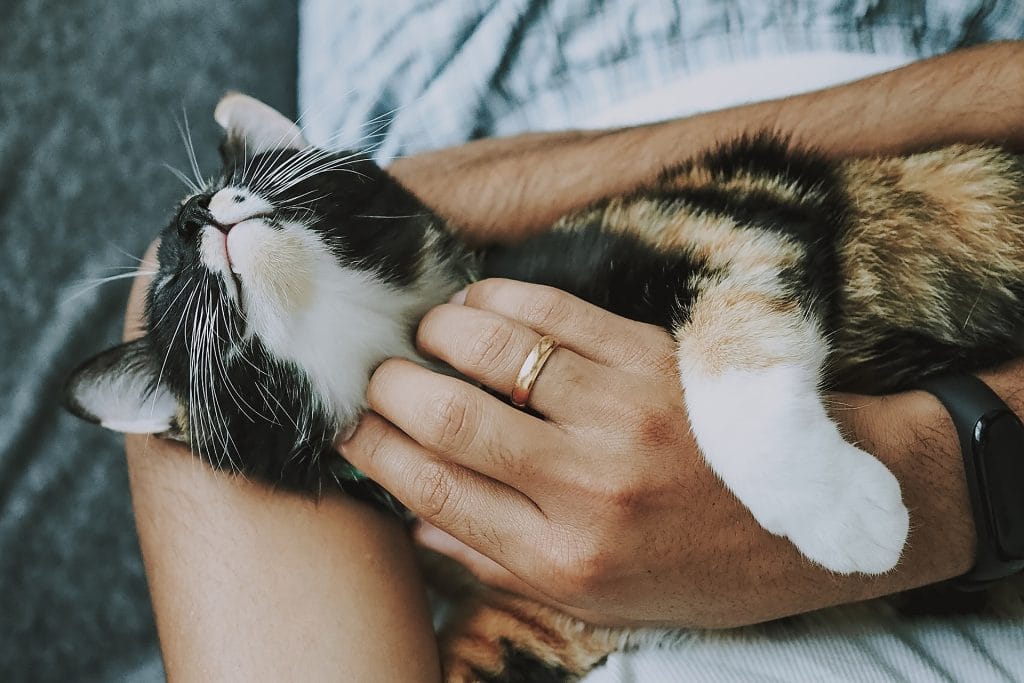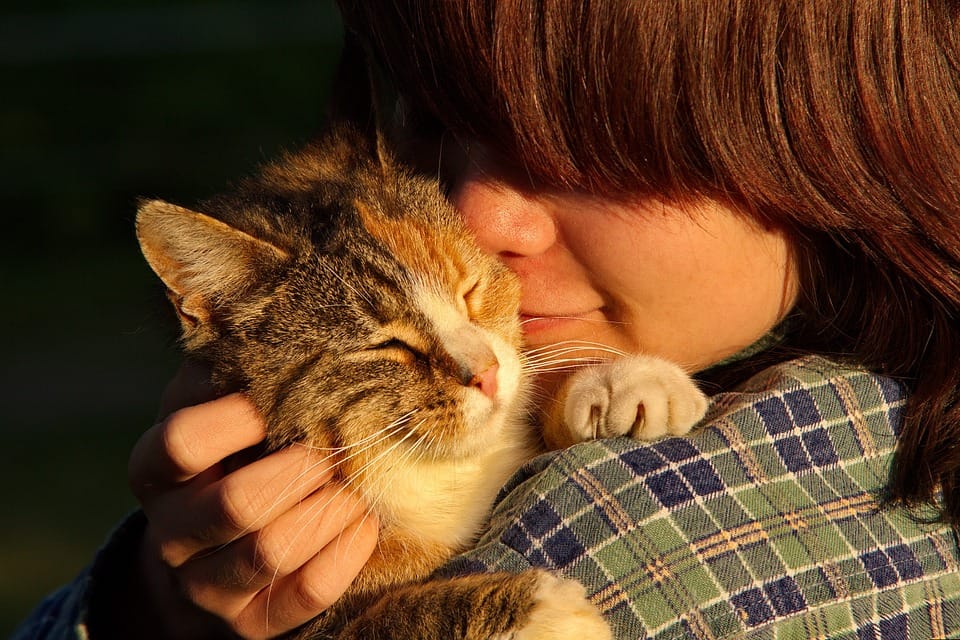There is a common belief that cats have a beneficial effect on people's health and even cure them of physical and mental illnesses. We decided to check if this is true.
The fact that cats heal people is written on websites manufacturers goods And services for animals and portals cat lovers. This topic is also popular in the media: Channel One filmed a story about the healing abilities of pets, "National News Service" And "RIAMO" interviewed trainer Yuri Kuklachev on this topic, "Arguments and Facts", "Moscow 24" And "Moskovsky Komsomolets" wrote articles about it. Interested healing abilities of cats and users blog platforms "Yandex.Zen", and some claim even that the diseases that these animals can cure depend on their breed. By survey VTsIOM, which was conducted in 2016, 79% of respondents believed that cats can treat people from certain diseases.
Despite the fact that this statement sounds like another myth, in medicine there is even a separate concept for it - feline therapy. This is a type of animal therapy (that is, therapy with the participation of animals), where cats act as “doctors”. Scientists have only recently begun to seriously study the effect of these animals on human health, but there are already works that confirmthat cats can indeed have a beneficial effect on people with depression, arthritis, multiple sclerosis and some other diseases. At the same time, Polish researchers note that the Ragdoll, Maine Coon and American Shorthair breeds are best suited for such therapy. These must be healthy adult cats over one year old, sterilized and fully vaccinated.
The most widely accepted belief is that cats have a beneficial effect on people with depression and other mental problems. In fact, this isn't just true for cats. According to survey Research Institute for Human-Animal Relations, any pets calm their owners, help relieve stress after a hard day, improve mood, which, of course, has a beneficial effect on the psychological state of people. This is due to the fact that interaction with animals enhances the production of oxytocin, a hormone that reduces anxiety and gives a feeling of confidence and security. At the same time, the survey revealed a direct relationship between this positive effect and the duration of communication between a person and a pet. During self-isolation due to the COVID-19 pandemic, many began to spend more time with their pets, and the number of people who noticed that pets had a beneficial effect on their mental health increased by 13%.

In addition, pets effectively help combat feelings of loneliness, making up for the lack of social connections with people, which also has a positive effect on a person’s psychological state. It was this property of cats, by the way, that helped James Bowen, a former drug addict and author of the book, return to normal life "A Street Cat Named Bob". Acquaintance with a stray cat, according to Bowen, helped him overcome addiction and depression and find the meaning of life.
University of Minnesota specialists claimthat the influence of cats on a person’s psychological state is so great that it helps reduce the risk of a heart attack by almost a third. Over 20 years, they observed 4,435 Americans, 55% of whom had cats at home. Scientists discoveredthat, after adjusting for other factors, owners of these animals had a significantly lower risk of death from a heart attack than other study participants. The same applies to other cardiovascular diseases. Therefore, scientists believe, domestic cats may become a new recognized method of prevention for people at increased risk of myocardial infarction.
At the same time, even simple observation of cats has a similar effect. Biologists from Volgograd University conducted experiment: Participants watched videos of cats and listened to audio recordings of them purring while scientists measured their pulse, blood pressure, and heart rate. After some time of observing the cats, all the participants’ indicators returned to normal; images of cats and the sounds of purring had a particularly beneficial effect on blood pressure.
According to some researchers, cats help normalize dream. A survey of pet owners in Britain has shown that many people (especially women) sleep more comfortably and peacefully with a cat or dog than with their partner.

Dogs are usually used as companion animals, but in recent years cats have also gotten involved. So, a cat lives and “works” at the Denver airport Kseli, which helps travelers cope with the stress of layovers, flight cancellations or jet lag. Stitch, therapy cat, helps passengers and flight crews at the Minneapolis airport. Cat named Duke Ellington supports patients at San Francisco Medical Center.
But psychological support is not all that cats are capable of. Experts from the North Carolina Fauna Interactions Research Institute found outthat cats purr at a frequency of 27 to 44 hertz, and this helps their bones heal and wounds heal faster. At the same time, there is researchthat exposure to frequencies from 25 to 50 hertz strengthens human bones and helps them grow. Accordingly, purring has a beneficial effect on people with bone diseases and injuries. Of course, the effect that a purring cat has on a person is somewhat lower than that received by the cat itself, but this gave scientists the idea in the future to create some kind of mechanism that reproduces purring in order to treat those patients who find it difficult to perform strengthening physical exercises.
In addition, some people notice that cats themselves sometimes lie down on sore spots, for example, next to aching joints, and the pain subsides. It was not possible to find studies that would explain this from a scientific point of view, but there is a version that the temperature of the inflamed part of the body rises, and cats are drawn to warmth. At the same time, their own temperature much higher than humans - 38-39 ° C, so animals lying next to the diseased part of the body have a thermal effect, which can slightly reduce the pain, as if it were a heating pad. However, there is no scientific evidence for this.

Of course, for many people, “cat therapy” is not a suitable option due to allergies to wool. But oddly enough, it is cats that can help avoid the development of allergies - and not only to themselves. American scientists found outfound that children who grew up in a home with two cats or dogs in the first years of life are less likely to be allergic to fur, pollen and some other allergens than those who grew up with one animal or no animals at all. Swedish researchers confirmed This theory, moreover, they believe that the more animals a child grows up with, the lower the chance that he will develop an allergy. According to their calculations, the risk of developing allergies in children who lived with five or more cats or dogs at an early age tends to zero. Reduces communication with cats and the likelihood of developing asthma.
Thus, cats really have a beneficial effect on human health: they calm people down, reduce the risk of developing various diseases - from cardiovascular to allergic, and improve psychological well-being. While they are certainly not a panacea or a replacement for traditional drug or therapeutic treatment, they can be a complement to it.
Mostly true
Read on the topic:
- Is it true that cats only meow for humans?
- Is it true that animals can sense earthquakes?
- "A Street Cat Named Bob" James Bowen
If you find a spelling or grammatical error, please let us know by highlighting the error text and clicking Ctrl+Enter.






